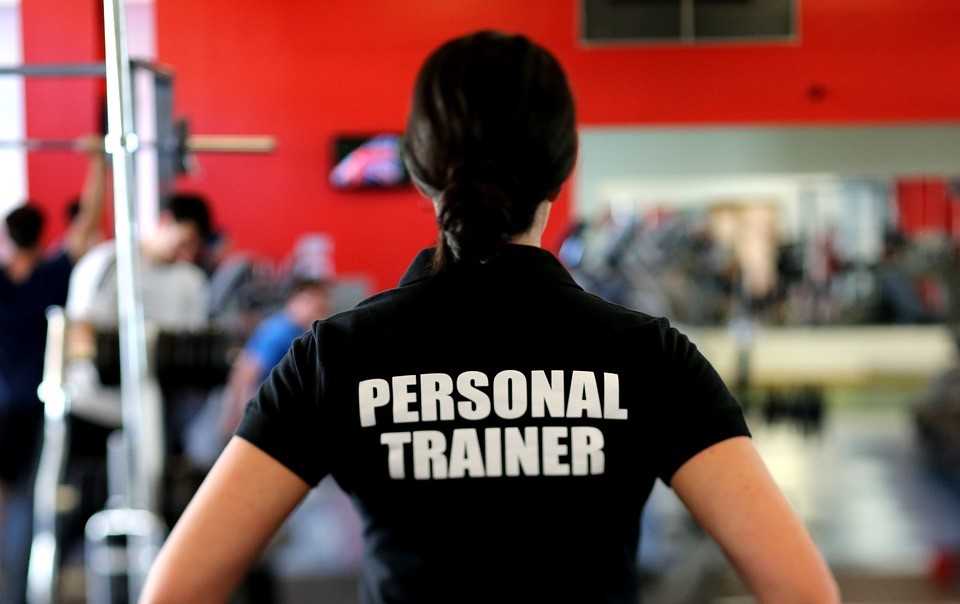If you’re passionate about fitness and wondering how to start your own gym, look no further. In this post, we’ll be taking a deep dive into how to open a gym and what it means to maintain a gym and turn a passion into profit.
Firstly, let’s look at the current fitness industry:
Since COVID-19, everything has changed, including the fitness industry marketing. Many fitness fans had to start working out from home and keep their gym membership cards aside. But since then, the fitness industry has begun to boom.
The projected CAGR of the fitness industry between 2021 and 2026 is 7.21%. And it’s no surprise that the growth is so rapid. Since countries have been slowly lifting restrictions, people have returned to gyms, and new members are also willing to sign up because wellness is a high priority in the modern world.
So, learning how to open a gym is a good idea. If you have a passion for fitness and believe in helping people improve their overall health and achieve their wellness goals, then launching your own gym is just the thing to do.
But where do you start?
You can take eight simple but effective steps to create a well-rounded fitness center for customers. Let’s look at them in more detail now:
8 Steps on How to Start Your Own Gym
Step 1: Define your niche
When looking at how to start a gym business, it’s much like other businesses in that you need to find your fitness niche. You can create a more generic fitness center or specialized gym based on your fitness experience, interests, and passions.
If you choose a generic fitness center, you’ll want a mix of cardio, body-building services, and things like yoga and spinning classes. The idea here is to appeal to the majority of fitness fans.
If you choose a specialized gym, you’ll want it to be quite particular regarding services. For example, it could be based on a certain fitness activity such as yoga, Pilates, or aerobics. No matter what the specialization is, it’s important to note that this will be the vision for your gym from day one, and you shouldn’t steer too far away from the specialization, because people will attend your gym for that particular fitness activity.
It’s also essential to lay out the specific elements you need for your niche. For example, if you have a Pilates studio, you will need mirrors, mats, and other equipment. This will be more prominently laid out in your business plan, which is the next step.

Step 2: Develop a business plan
Before starting your own gym, you must acknowledge the power of planning. If you take some time to plan upfront, you will be better prepared for internal and external factors which can affect your fitness center.
The first step to planning is acknowledging that you will be working from the ground up. So, it would be best if you did some research. You could do this online or look to other gym owners, fellow fitness fans, and fitness experts to gain knowledge and get the lay of the land. Chat, email, and call these gym owners for information. Most are willing to help a fellow gym entrepreneur in need.
Once your research is done, it’s time to assemble a business plan. How do you write a business plan? Once you have a well-defined vision for your gym, it’s time to start outlining a mission statement, business goals, business objectives, and finances. Here are a few crucial elements of a business plan for your gym:
- An executive summary
- A well-defined description of your gym business
- The fitness industry that your gym will be operating in
- A description of services offered
- A financial plan
- A marketing plan
Step 3: Establish a budget
Once you have your business plan, it’s time to create a budget. Yes, business means money, and money means business. So, you should spend a decent amount of time establishing and planning for an accurate and realistic budget.
There are two vital elements you should consider when creating a budget for your gym; the amount of actual capital needed to start your new gym and the amount of money required to sustain your gym business running costs for the first year.
These are your start-up and running costs that help you define how much capital you need to start your gym. Start-up costs refer to how much it will actually cost to start your gym, and running costs are recurring expenses incurred once you open your gym.
Budgeting is not always the most fun part of starting your own gym. But once it is complete, you can have peace of mind that you can easily budget each and every month.
When budgeting, make sure you include the following start-up and running costs:
- Your location (e.g., Rent)
- Equipment (e.g., Treadmills)
- Staff (e.g., Personal trainers)
- Marketing plan (e.g., Local and online advertising)
- Other expenses such as insurance, accounting, gym management software, etc.

Step 4: Find a location
Location, location, location. We’ve all heard it before. And the saying is true: your gym’s location will be the most vital piece of the puzzle. But how do you choose one?
There are a few factors you should consider before choosing a location:
The style of your gym
Is your casual, elegant, or formal? What overall aesthetic are you going for? The look and feel of your gym will dictate which areas it will fit in best. For example, a trendy, colorful yoga studio may work well in a city center.
Your target market
Which areas do they live in, and where do they spend their time? You want your gym to be in a space where people can access easily. You should pay attention to amenities such as parking, access to public transit, etc. Remember, your location needs to speak to your potential customers. If it’s inconvenient for your target market, they won’t sign up for a membership.
The foot traffic
In addition to your gym being in your target market’s daily vicinity, it should also be located where there is good foot traffic. If someone walks by your gym every day to get to work, chances are they would consider signing up at your gym versus another one they would need to transit or drive to. Foot traffic is also imperative, as you want your gym visible from the road. Avoid premises that are tucked away on a side road. Visibility is everything.

Step 5: Acquire funding
Now that you have a plan, budget, and location, it’s time to start preparing for funding. This isn’t always the easiest part of starting your own gym. But if you have a well-rounded business plan with goals, timelines, objectives, and tactics, investors will be more interested in your gym plan than the one down the street.
You have two choices regarding funding; find an investor or get a small business loan from a bank. No matter which route you choose, remember that your business plan will be the basis for a yay or nay from investors. They will likely invest in your business if they can easily see how you plan to run your gym and keep its doors open for the first year.
If you’re feeling unfamiliar with funding, you should also look to other gym owners for advice on how they got their own gym started.
Step 6: Purchase equipment
Once you have your location and funding confirmed, it’s time to refer to that business plan and start looking at what equipment you need to fill your very own gym space!
Of course, your equipment heavily depends on the fitness niche you choose. But for a typical gym, you will need weight equipment like dumbbells. You will also need cardio equipment such as treadmills and bikes. This won’t be cheap, but the advantage is that most gym equipment does last a long time.
If you will be offering additional services, you will need to fulfill equipment for those services as well. This could be anything from adding saunas to smoothie stalls. The choice is entirely up to you, your budget, and your overall vision.
Remember that there will also be other necessities in every gym that will need to be added. This can be anything from good lighting to rubber flooring to abide by safety protocols. Mirrors are a must, too.
Step 7: Hire staff
Your gym will also need staff to help you run an efficient ship while providing exceptional customer experience to each and every member who walks through that door.
Depending on your niche, you may need yoga instructors, spinning instructors, Pilates experts, or personal trainers. These are the gym services staff. But in addition to this, you will also need staff to help handle the administrative side of your fitness center and the marketing and communication side of things. If you wish, you can always use premium gym management software to help you market and gain more customers efficiently and timeously.
You can also hire staff using a phased approach. So, you hire more trainers as your gym member count grows. This can help manage a tighter budget and still successfully fulfill your members’ needs.
When hiring gym staff, remember to look beyond their qualifications. Each team member should match your brand personality and style. They should believe in your overall mission and vision for the gym (refer to that business plan), and conversations with you and other staff should feel natural. This way, you can ensure that each customer experience is a positive one.

Step 8: Market your gym
Now that everything is set up and ready to go, it’s time to move your efforts toward marketing your own gym. Where do you start? Like any other business venture, you should always start with the people you know. You are sure to meet more along the way, but you need a client base who can experience your gym facilities and services and spread the word. We advise starting with family, friends, colleagues, and acquaintances. Once they sign up, have them share their experience on social media platforms. This way, your brand is shared by more than you and your staff.
You can also use your location to your advantage here. Advertise in local newspapers, put up flyers in the area, and use your Google My Business listing to help drive foot traffic to your gym.
You can also have a launch event to attract many people to your gym from day one. Share referral programs and discounted memberships as an “early bird” special. These marketing tactics can take your new gym to the next level from its inception.

The next phase would be marketing to a more extensive potential client base. You can do this using gym management software which helps engage members via email and Text marketing. The best part is that all your campaigns are automated, saving you time and allowing the software to do the best engagement work for you.
Remember, the most important thing in business is always keeping your customer satisfaction in mind. By using smart technology, you can be sure your marketing will be personalized, relevant, and adaptable.
How to Open a Gym: FAQs
- How do I choose the right location for my gym?
Choosing the ideal location for your new gym involves considering the following factors; visibility, foot traffic, area to target market, parking, ease to public transit, and competition.
- How do I market my gym?
You can market your gym by using offline advertising (print and radio ads) and online advertising (social media, email, SMS marketing, Google AdWords). You can also market your gym by networking and setting up referral programs.
- How do I hire staff for my gym?
Hiring staff who reflect your gym’s values is vital. Look for staff who blend in with the gym style and who are qualified for the position you’re looking for. Ensure they are aligned with your vision.
Get a look at those steps right here
- Why Gym and Fitness Centers Should Use Text Message Marketing
- 10 Ways to Boost Your Gym Sales with Text Message Marketing


